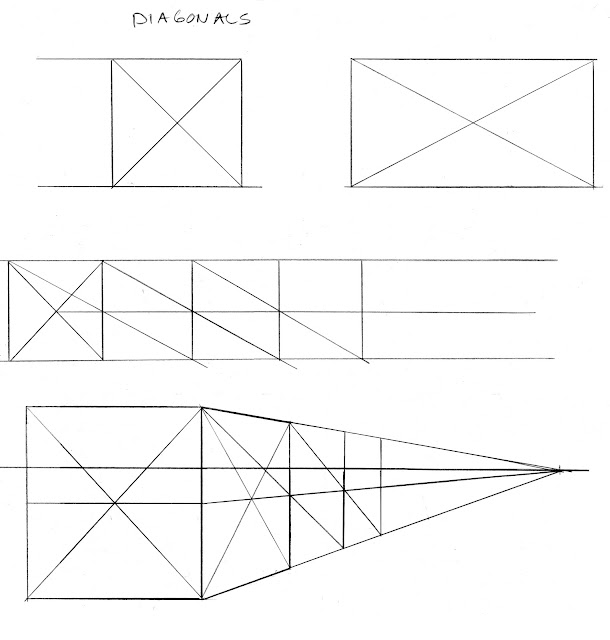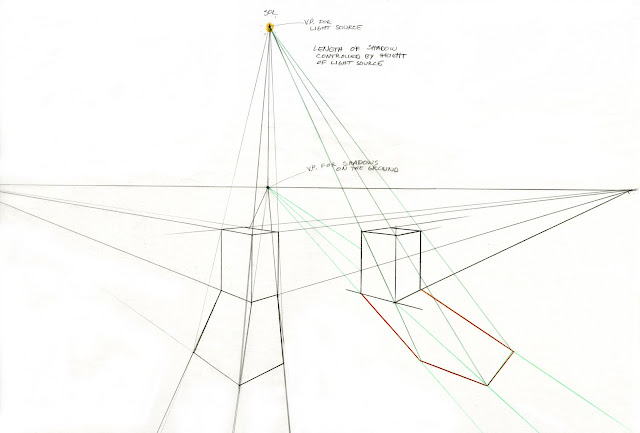One Point Perspective.
This is a one point perspective. That refers to the basic set up of the view.
The rules for the set up: All lines are Horizontal, vertical or vanish to the ONE POINT.
That doesn't mean that everything in the view is in one point perspective- just the room itself, and items that are on axis with the set up. Such as the sofa, coffee table etc.
The door is not in same plane so it is two point. Same with the blades of the fan. In these instances use the horizon line to find vanishing points that make the perspective believable.
The horizon line controls the perspective of the room but since we opened the door and put a window in the back wall we can actually see the horizon in the background. If the window wasn't ther and the door was closed nothing in the room would change. The horizon still controls the vanishing points.
Two point with a lower camera angle (lower elevation for the Horizon line).
The elevation of the horizon line is 3'. The height of the wall is 10'. look at the difference in
how this room looks. draw it with a horizon line at 6' and see the difference between a child's eye view and an adults.




























